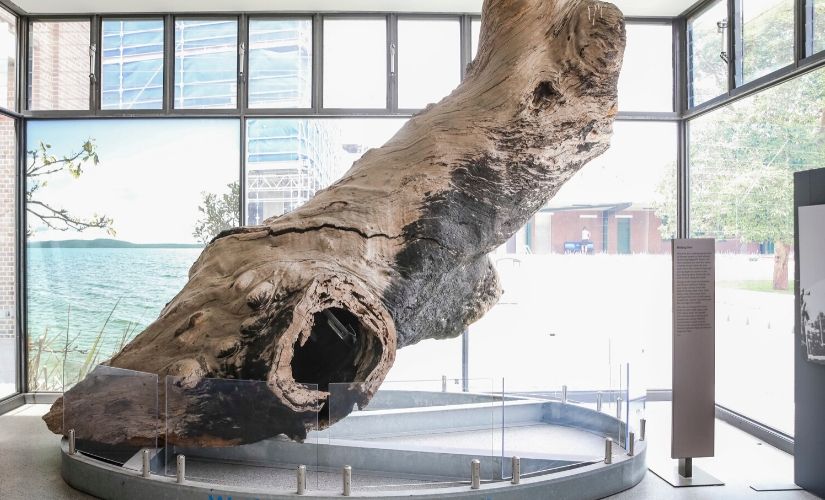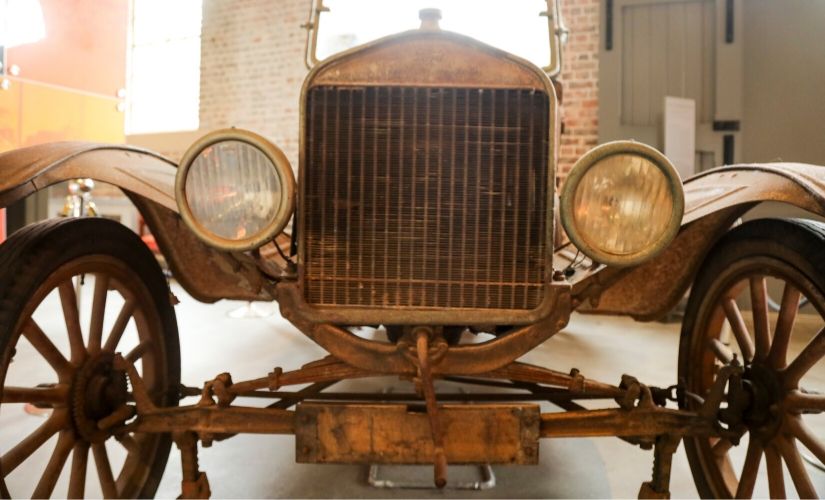10 Wonders to unearth at the Newcastle Museum
At Newcastle Museum you can explore the city’s indigenous Awabakal roots to a history forged by convicts, coal and steel.
Open Tues - Sat, the Museum offers a treasure trove of artifacts and engaging experiences for visitors to enjoy.
Here are 10 other fascinating things to unearth on your next visit:
1. Meet the Buck
Built in the 1870’s, The Buck is a saddle tank locomotive shipped from the UK which delivered coal locally for almost a century.
Now boasting pride of place in the Link Gallery, Newcastle Museum was actually built around The Buck which had to be installed via a 300-tonne crane.
2. See the magical fishing tree
In the museum’s foyer is the fascinating Fishing Tree used by generations of Worrimai Aboriginal people to find schools of fish near Bagnall's Beach.
Indigenous people would climb up the tree, which overhung the water, and direct people in canoes to the best fishing spots.
Amazingly, their footholds can still be seen in the trunk!

Fishing Tree, Newcastle Museum
3. Check out the one-man band
An ingenious one-man-band, all played by the feet and mouth, is found in the exhibition, ‘A Newcastle Story’.
A miner, injured on the job and unable to use his arms, came up with the one-man-band.
It includes a bass drum, six mouth organs, a guitar and quirky additions like an ash tray, a bullet cartridge and a donkey that kicks Donald Duck and makes his mouth fly open in pain.
4. See the most important car of the 20th Century
Ford is about as American as you can get however the museum’s 1923 Model T chassis was built in Canada and imported to Australia where Sydney company Steenbohms built the body of the car.
Complete with horsehair stuffing, original paint, nameplates and a wooden body, this fascinating Model T is almost completely original.

Model T Ford, Newcastle Museum
5. Watch how an indigenous canoe is built
Proud Gringai-Worrimai man Luke Russell and his team demonstrated how a Kuueeyung (bark canoe) is made using scant information recorded a century ago.
The kuueeyung, made from the Stringybark tree, was then successfully launched at Carrington boat ramp.
Visitors to the museum can see the canoe and watch a video of its construction using ancient indigenous techniques.
6. See Bradman's bison head
In 1932 Australia’s most famous cricketer Don Bradman played a tour through the United States and Canada during his honeymoon and was given a taxidermied Bison’s head as a wedding present.
Obviously too big for Don’s poolroom, Bradman donated it to the Australian Museum but ‘Bill the Bison’ eventually found his forever home at the Newcastle Museum.
Bill keeps a watchful eye over the museum’s upstairs staffroom.
7. Meet the locals
Famous and ordinary Novocastrians feature on the museum’s Wall of Faces including:
- An opera singer
- Australia’s first Aboriginal publicans
- Australian title holding boxers
- Punk bands
- and a very candid Joey Johns.
Anyone can contribute a portrait of a Novocastrian or Hunterite to include on the wall and become history - register here
8. See Australia's oldest rail relic
It might not be much to look at but the ‘fish bellied rail’ relic on display in the Link Gallery changed Australia’s history.
Discovered in 2007, the chunk of metal imprinted with AACo is proof that Newcastle East’s coal railway is older than Hobart’s convict pulled train.
The gravity line that once ran from a coal mine on top of The Hill is classified as Australia’s oldest trainline.
9. Be amazed by one of the world's oldest and rarest trees
The Wollemi pine (Wollemia nobilis) is one of the world’s oldest and rarest trees.
The Newcastle Museum has three real-life examples thriving in its foyer.
10. Egg-cellent collection
The former hobby of egg-collecting is now considered an environmental threat; however the museum’s collection demonstrates the biodiversity of the region in the 1930s.
On display in ‘A Newcastle Story’ is a collection of 320 Australian native birds’ eggs of various sizes, colours and shapes.
Find out more
See all these and more for at the Newcastle Museum.
Visit Newcastle Museum


